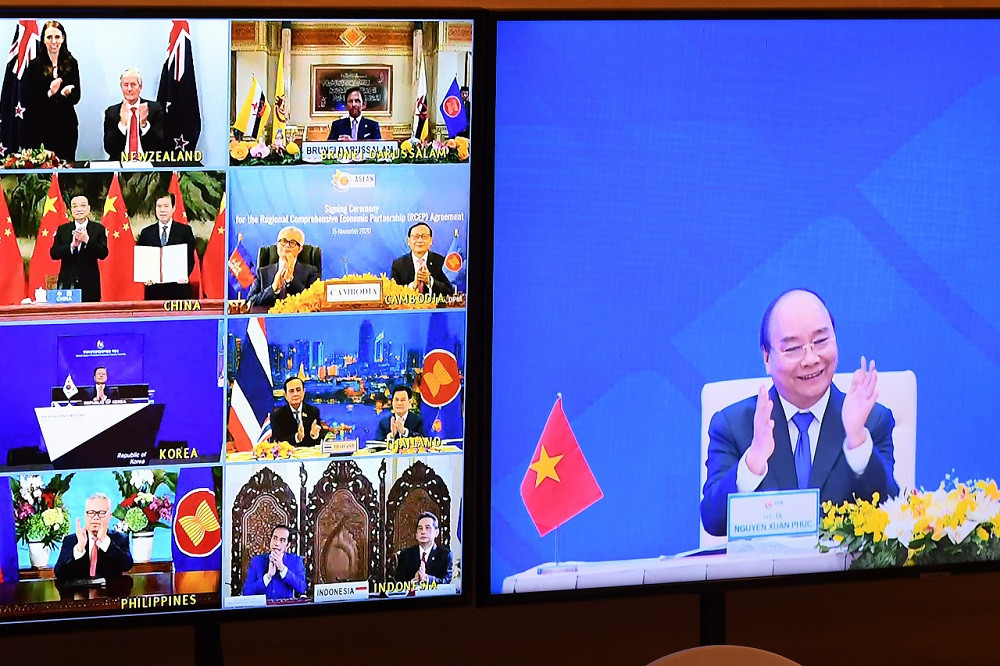Popular Reads
Top Results
Can't find what you're looking for?
View all search resultsPopular Reads
Top Results
Can't find what you're looking for?
View all search resultsRCEP: The two-edged sword
Considering the ongoing supply chain relocation trend out of China, the RCEP should also help strengthen the integration of regional supply chains.
Change text size
Gift Premium Articles
to Anyone
M
ass media reports rightly praised the Regional Comprehensive Economic Partnership (RCEP) that the 10 member countries of ASEAN and their five major trading partners — Japan, China, South Kore, Australia and New Zealand — signed on Sunday as one of the largest free trade agreements.
The RCEP will certainly generate a great impact on the global economy, especially trade, because the 15 signatory countries, with a combined gross domestic product of US$26 trillion, represent one third of the world economy and 2.2 billion people. Yet more outstanding is that it is the first trade agreement that links Japan and China, the region’s two economic powerhouses.
The deal, besides providing a common set of rules for digital trade and intellectual property, establishes a common rules-of-origin framework for goods, which will enable exporters in RCEP economies to use input sourced from other members in order to qualify for preferential access when trading within the bloc.
The RCEP is really a comprehensive and high-quality agreement, as its name proclaims, because the deal has been designed to remove non-tariff barriers to trade in areas such as services, investment, e-commerce, competition, government procurement, intellectual property and the movement of people.
This will certainly reduce costs and time for companies by allowing them to export a product anywhere within the bloc without meeting separate requirements for each country. The common rules will also make it easier for companies to set up supply chains in several different countries. Furthermore, the RCEP common trade rules will simultaneously solve the “noodle bowl” of various overlapping preferential trading arrangements that most RCEP members already have with each other.
The RCEP sends a very strong signal that ASEAN is willing to engage with its important neighbors to embrace regional economic growth by delivering a free trade agreement and affirms its role in supporting the multilateral trade system.
Considering the ongoing supply chain relocation trend out of China, the RCEP should also help strengthen the integration of regional supply chains. This advantage will also help attract investors beyond the region as the Chinese and regional markets will be seen as an integrated market, and exports to the rest of the world will become much more competitive.
Indonesia as ASEAN’s largest economy with a consumer market of over 270 million will theoretically be in a strong position to benefit from the free trade and comprehensive economic cooperation. But the RCEP serves as a two-edged sword. Indonesia has the potential to become a competitive production base for labor-intensive manufacturers intending to tap RCEP countries and will be able to export more to other RCEP bloc countries.
Unfortunately, Indonesia’s economy is less competitive even against other major ASEAN countries in attracting foreign investors. The government and business sector, therefore, need to do more to improve the investment climate through such comprehensive reforms as stipulated in the Jobs Creation Law, otherwise we would largely become a market for products from other RCEP members at the expense of our own manufacturers.










